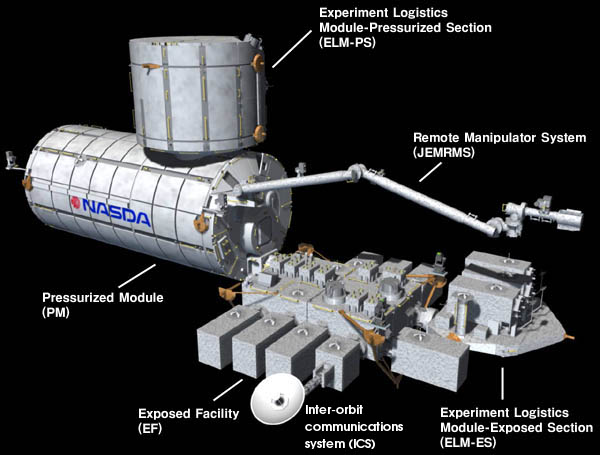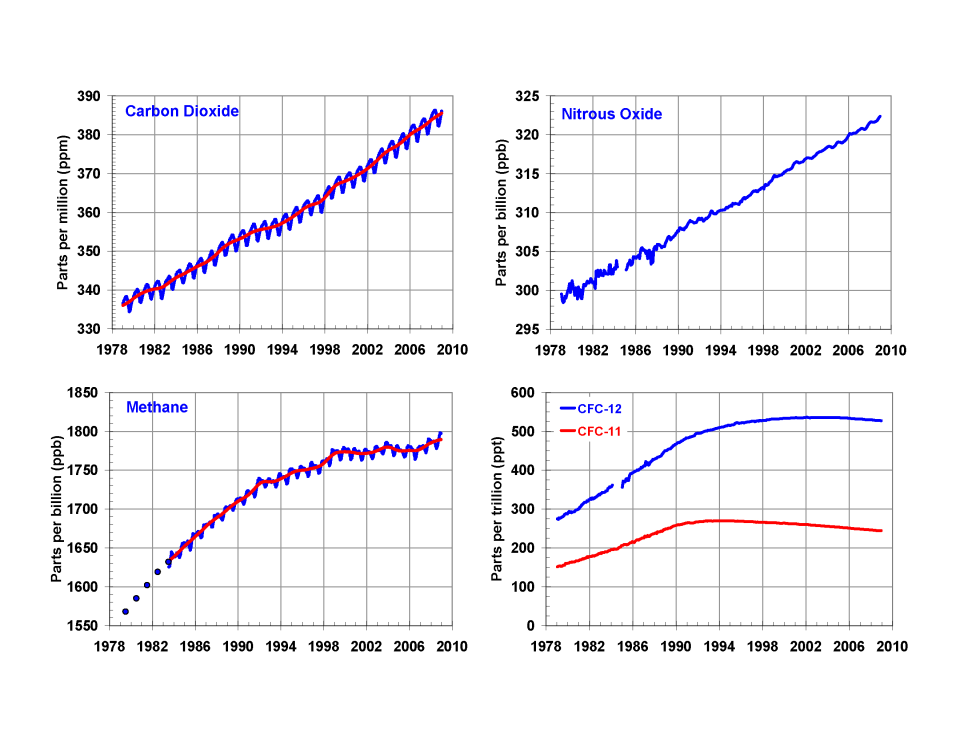|
GOSAT
The Greenhouse Gases Observing Satellite (GOSAT''), also known as , is an Earth observation satellite and the world's first satellite dedicated to greenhouse gas monitoring. It measures the densities of carbon dioxide and methane from 56,000 locations on the Earth's atmosphere. The GOSAT was developed by the Japan Aerospace Exploration Agency (JAXA) and launched on 23 January 2009, from the Tanegashima Space Center. Japan's Ministry of the Environment, and the National Institute for Environmental Studies (NIES) use the data to track gases causing the greenhouse effect, and share the data with NASA and other international scientific organizations. Launch GOSAT was launched along with seven other piggyback probes using the H-IIA, Japan's primary large-scale expendable launch system, at 3:54 am on 23 January 2009 UTC on Tanegashima, a small island in southern Japan, after a two-day delay due to unfavourable weather. At approximately 16 minutes after liftoff, the se ... [...More Info...] [...Related Items...] OR: [Wikipedia] [Google] [Baidu] |
Greenhouse Gases Observing Satellite-2
The Greenhouse Gases Observing Satellite-2 (GOSAT-2), also known as , is an Earth observation satellite dedicated to greenhouse gas monitoring. It is a successor of Greenhouse Gases Observing Satellite (GOSAT). The GOSAT-2 was developed as a joint project of the Japan Aerospace Exploration Agency (JAXA), Ministry of the Environment, and the National Institute for Environmental Studies (NIES). It was launched on 29 October 2018 from the Tanegashima Space Center aboard the H-IIA rocket. Comparison to GOSAT Major changes in comparison to the previous GOSAT are: * Improved measurement precision. * FTS-2 can also monitor carbon monoxide (CO) and nitrogen dioxide (NO2). * FTS-2 can select cloud-free point automatically for observation. * While GOSAT's CAI was observing nadir view, GOSAT-2's CAI-2 observes forward (20 degree) and backward (20 degree) simultaneously. * CAI-2 can also monitor PM2.5 and black carbon. Successor: GOSAT-GW GOSAT-GW is currently being developed for ... [...More Info...] [...Related Items...] OR: [Wikipedia] [Google] [Baidu] |
Space-based Measurements Of Carbon Dioxide
Space-based measurements of carbon dioxide () are used to help answer questions about Earth's carbon cycle. There are a variety of active and planned instruments for measuring carbon dioxide in Earth's atmosphere from space. The first satellite mission designed to measure was the Interferometric Monitor for Greenhouse Gases (IMG) on board the ADEOS I satellite in 1996. This mission lasted less than a year. Since then, additional space-based measurements have begun, including those from two high-precision (better than 0.3% or 1 ppm) satellites ( GOSAT and OCO-2). Different instrument designs may reflect different primary missions. Purposes and highlights of findings There are outstanding questions in carbon cycle science that satellite observations can help answer. The Earth system absorbs about half of all anthropogenic emissions. However, it is unclear exactly how this uptake is partitioned to different regions across the globe. It is also uncertain how different re ... [...More Info...] [...Related Items...] OR: [Wikipedia] [Google] [Baidu] |
JAXA
The is the Japanese national air and space agency. Through the merger of three previously independent organizations, JAXA was formed on 1 October 2003. JAXA is responsible for research, technology development and launch of satellites into orbit, and is involved in many more advanced missions such as asteroid exploration and possible human exploration of the Moon. Its motto is ''One JAXA'' and its corporate slogan is ''Explore to Realize'' (formerly ''Reaching for the skies, exploring space''). History On 1 October 2003, three organizations were merged to form the new JAXA: Japan's Institute of Space and Astronautical Science (ISAS), the National Aerospace Laboratory of Japan (NAL), and National Space Development Agency of Japan (NASDA). JAXA was formed as an Independent Administrative Institution administered by the Ministry of Education, Culture, Sports, Science and Technology (MEXT) and the Ministry of Internal Affairs and Communications (MIC). Before the merger ... [...More Info...] [...Related Items...] OR: [Wikipedia] [Google] [Baidu] |
H-IIA
H-IIA (H-2A) is an active expendable launch system operated by Mitsubishi Heavy Industries (MHI) for the Japan Aerospace Exploration Agency. These liquid fuel rockets have been used to launch satellites into geostationary orbit; lunar orbiting spacecraft; ''Akatsuki'', which studied the planet Venus; and the Emirates Mars Mission, which was launched to Mars in July 2020. Launches occur at the Tanegashima Space Center. The H-IIA first flew in 2001. , H-IIA rockets were launched 45 times, including 39 consecutive missions without a failure, dating back to 29 November 2003. Production and management of the H-IIA shifted from JAXA to MHI on 1 April 2007. Flight 13, which launched the lunar orbiter SELENE, was the first H-IIA launched after this privatization. The H-IIA is a derivative of the earlier H-II rocket, substantially redesigned to improve reliability and minimize costs. There have been four variants, with two in active service (as of 2020) for various purposes. ... [...More Info...] [...Related Items...] OR: [Wikipedia] [Google] [Baidu] |
Greenhouse Gas Monitoring
Greenhouse gas monitoring is the direct measurement of greenhouse gas emissions and levels. There are several different methods of measuring carbon dioxide concentrations in the atmosphere, including infrared analyzing and manometry. Methane and nitrous oxide are measured by other instruments. Greenhouse gases are measured from space such as by the Orbiting Carbon Observatory and networks of ground stations such as the Integrated Carbon Observation System. Methodology Carbon dioxide monitoring Manometry Manometry is a key measurement tool for atmospheric carbon dioxide by first measuring the volume, temperature, and pressure of a particular amount of dry air. The air sample is dried by passing it through multiple dry ice traps and then collecting it in a five-liter vessel. The temperature is taken via a thermometer and pressure is calculated using manometry. Then, liquid nitrogen is added, causing the carbon dioxide to condense and become measurable by volume. The ... [...More Info...] [...Related Items...] OR: [Wikipedia] [Google] [Baidu] |
Yoshinobu Launch Complex
Yoshinobu Launch Complex (LC-Y) is a rocket launch site at the Tanegashima Space Center on Tanegashima. The site and its collection of facilities were originally built for the H-II launch vehicle and later used for H-IIA and H-IIB launches. It is the most Northern launch complex at Tanegashima, and along with the now inactive Osaki Launch Complex used for orbital launches. The Yoshinobu Launch Complex consists of two launch pads. The complex also contains a test stand Test(s), testing, or TEST may refer to: * Test (assessment), an educational assessment intended to measure the respondents' knowledge or other abilities Arts and entertainment * ''Test'' (2013 film), an American film * ''Test'' (2014 film), ... for firing the LE-7 engines used in the first stage of the H-II and its derivatives. Prior to launch, rockets are processed vertically in the complex's vehicle assembly building. The rocket is rolled out to the launch pad on a mobile launcher platform about t ... [...More Info...] [...Related Items...] OR: [Wikipedia] [Google] [Baidu] |
Orbiting Carbon Observatory 2
Orbiting Carbon Observatory-2 (OCO-2) is an American environmental science satellite which launched on 2 July 2014. A NASA mission, it is a replacement for the Orbiting Carbon Observatory which was lost in a launch failure in 2009. It is the second successful high-precision (better than 0.3%) observing satellite, after GOSAT. Mission overview The OCO-2 satellite was built by Orbital Sciences Corporation, based around the LEOStar-2 bus. The spacecraft is being used to study carbon dioxide concentrations and distributions in the atmosphere. OCO-2 was ordered after the original OCO spacecraft failed to achieve orbit. During the first satellite's launch atop a Taurus-XL in February 2009, the payload fairing failed to separate from around the spacecraft and the rocket did not have sufficient power to enter orbit with its additional mass. Although a Taurus launch was initially contracted for the reflight, the launch contract was cancelled after the same malfunction occurred on the ... [...More Info...] [...Related Items...] OR: [Wikipedia] [Google] [Baidu] |
Tanegashima
is one of the Ōsumi Islands belonging to Kagoshima Prefecture, Japan. The island, 444.99 km2 in area, is the second largest of the Ōsumi Islands, and has a population of 33,000 people. Access to the island is by ferry, or by air to New Tanegashima Airport. Administratively, the island is divided into the cities of Japan, city, Nishinoomote, Kagoshima, Nishinoomote, and the two towns of Japan, towns, Nakatane, Kagoshima, Nakatane and Minamitane, Kagoshima, Minamitane. The towns belong to Kumage District, Kagoshima, Kumage District. Geography Tanegashima is the easternmost and the second largest (after Yakushima) of the Ōsumi Islands. It is located approximately south of the southern tip of Ōsumi Peninsula in southern Kyushu, or south of Kagoshima, Kagoshima, Kagoshima. The Vincennes Strait (Yakushima Kaikyō) separates it from Yakushima. The island is of volcanic origin; however, unlike neighboring Yakushima, it presents a flat appearance, with its highest elevation ... [...More Info...] [...Related Items...] OR: [Wikipedia] [Google] [Baidu] |
Infrared
Infrared (IR), sometimes called infrared light, is electromagnetic radiation (EMR) with wavelengths longer than those of visible light. It is therefore invisible to the human eye. IR is generally understood to encompass wavelengths from around 1 millimeter (300 GHz) to the nominal red edge of the visible spectrum, around 700 nanometers (430 THz). Longer IR wavelengths (30 μm-100 μm) are sometimes included as part of the terahertz radiation range. Almost all black-body radiation from objects near room temperature is at infrared wavelengths. As a form of electromagnetic radiation, IR propagates energy and momentum, exerts radiation pressure, and has properties corresponding to both those of a wave and of a particle, the photon. It was long known that fires emit invisible heat; in 1681 the pioneering experimenter Edme Mariotte showed that glass, though transparent to sunlight, obstructed radiant heat. In 1800 the astronomer Sir William Herschel ... [...More Info...] [...Related Items...] OR: [Wikipedia] [Google] [Baidu] |
Tsukuba Space Center
The Tsukuba Space Center (TKSC) also known by its radio callsign Tsukuba, is the operations facility and headquarters for the Japan Aerospace Exploration Agency (JAXA) located in Tsukuba Science City in Ibaraki Prefecture. The facility opened in 1972 and serves as the primary location for Japan's space operations and research programs. Japanese astronauts involved in the International Space Station are trained in part here in addition to the training they receive at the Lyndon B. Johnson Space Center, in Houston, Texas. The complex has several facilities that are used to assemble JAXA's satellites, and the Japanese Experiment Module for the International Space Station. The TKSC offers tours of the facility as well as an exhibit hall which features models of the H-II Transfer Vehicle and a full-sized mock-up of the '' Kibō'' module on the International Space Station. See also * International Space Station * Japan Aerospace Exploration Agency The is the Japanese nat ... [...More Info...] [...Related Items...] OR: [Wikipedia] [Google] [Baidu] |
Spectrometer
A spectrometer () is a scientific instrument used to separate and measure spectral components of a physical phenomenon. Spectrometer is a broad term often used to describe instruments that measure a continuous variable of a phenomenon where the spectral components are somehow mixed. In visible light a spectrometer can separate white light and measure individual narrow bands of color, called a spectrum. A mass spectrometer measures the spectrum of the masses of the atoms or molecules present in a gas. The first spectrometers were used to split light into an array of separate colors. Spectrometers were developed in early studies of physics, astronomy, and chemistry. The capability of spectroscopy to determine chemical composition drove its advancement and continues to be one of its primary uses. Spectrometers are used in astronomy to analyze the chemical composition of stars and planets, and spectrometers gather data on the origin of the universe. Examples of spectrometer ... [...More Info...] [...Related Items...] OR: [Wikipedia] [Google] [Baidu] |
-2.jpg)


.jpg)


